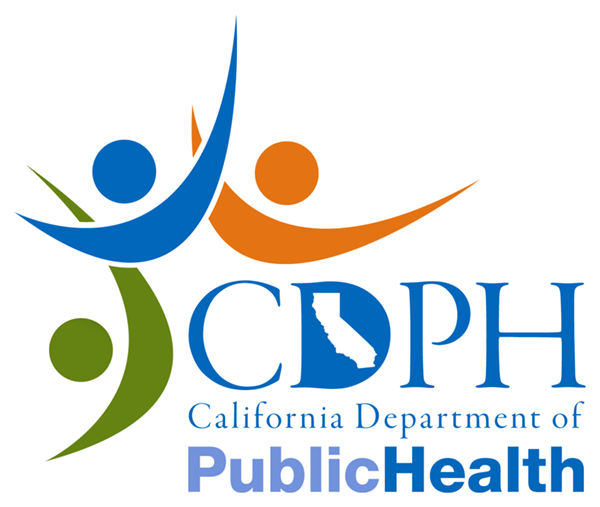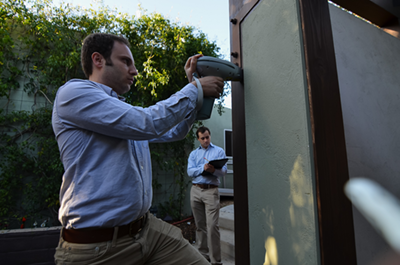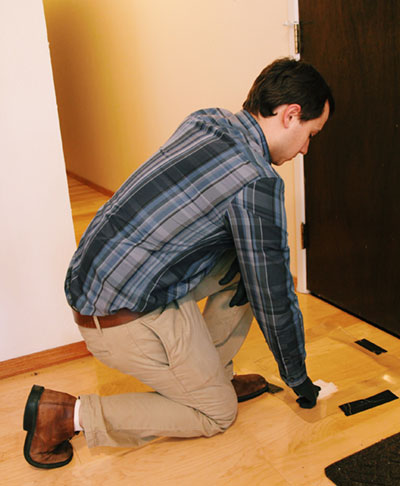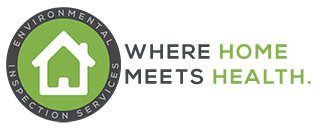LEAD PAINT
Southern California: (310) 396-6532
Northern California: (510) 868-1184
Lead is a heavy metal that causes neurological damage and can lead to mental and physical handicaps in children and adults. Up until 1978, lead pigment was manufactured for use in most household and industrial paints in the United States. Over the years, the degradation of this paint has caused thousands of cases a year of lead poisoning in California alone. Lead paint chips and dust from furniture, walls, and other building components contaminate living and working spaces.
When lead paint is in good condition, it does not inherently pose a lead poisoning hazard. However, if the lead paint is disturbed by remodeling, demolition, or just normal deterioration over a long period of time, a lead dust exposure hazard is created.
Our California Department of Public Health-certified lead inspectors and lead-sampling technicians will inspect your property for lead-painted components and lead-contaminated dust and soil. They will provide you with a report and consultation outlining actions that can be taken to resolve any lead paint issues associated with remodeling, demolition, or peace of mind.

Environmental Inspection Services will go through your building, house, apartment, or condo and systematically use our XRF device on either every painted surface (full lead survey) or on a specific area of the building (partial survey) that is of concern or is expected to be repainted, renovated or demolished.
Once any repainting, construction/remodeling/abatement has been completed, Environmental Inspection Services can test to confirm that lead hazard no longer is present.

For certification information, visit: http://www2.epa.gov/lead/getcertified

Lead is an especially potent toxin for young children. Although the EPA and FDA have established standards for levels of lead in the blood that are considered lead poisoning, there is no safe level of lead to have in your system. This is why Environmental Inspection Services recommends minimizing lead exposure hazards around the house.
If your house, condo, apartment was built before 1978, lead from paint that can degrade into floor dust, window dust, and soil dust. It gets onto kids clothes, hands and face, and then into their mouths or lungs.
It’s also important to look at your neighborhood. Are you near a busy street? There will be lead in soil and dust, left over from old leaded gasoline. This dust gets tracked into your house and can end up in your children’s lungs.
Specific cleaning can be a short-term strategy. Removing or covering contaminated soil, refinishing or replacing doors, cabinets, windows can be a long-term strategy. You may want to test household items for lead — dishes, mugs, furniture, kid’s jewelry, toys, etc.

For XRF analysis, a lead concentration of 1.0 mg/cm^2 (milligrams per square centimeter) is considered to be lead paint. Some municipalities such as Los Angeles county have a stricter limit of 0.7 mg/cm^2.
For lab analysis 0.5% and 0.06% by weight is lead paint, depending on your municipality.
*Note: Even if lead in paint is below these thresholds, we recommend following lead safe work practices.

There are three ways lead can contaminate your soil:
1) In certain regions, it is natural for soil lead concentrations to be high.
2) Lead in the exterior paint on your house/building oxidizes or chips off and contaminates your soil.
3) You live nearby a busy (or formerly busy) street/highway/freeway. Tetraethyl lead was a common additive in gasoline up until 1985, and even all these years later there is significant evidence that contamination from leaded gasoline remains widespread.
See http://www.ncbi.nlm.nih.gov/pmc/articles/PMC1533263/
Consuming fruits and vegetables grown in lead containing soil puts you at risk. Even if you’re careful to wash the fruit/vegetable before eating it, in the process of growing the plant may have absorbed the lead in the soil. Here is a New York Times article offering more information on the subject of lead paint-contaminated soil and gardening: http://www.nytimes.com/2009/05/14/garden/14lead.html?pagewanted=all&_r=0
The cost depends on many factors. Rather than display imprecise cost estimates, we prefer to communicate with you and gather more information about the work you need so we can give you our most accurate pricing.
